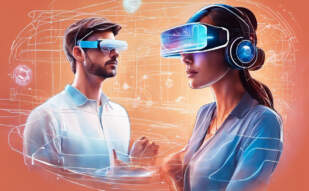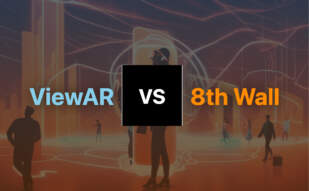UI/UX for Web AR experiences focus on a user-centered design approach that considers user context and interaction methods, maintaining visual consistency in AR interface, creating immersive AR experiences through storytelling, optimizing AR for high performance, and enhancing user engagement with intuitive interactions and feedback.

In this article, you will learn how to effectively leverage design principles for AR and navigate the unique challenges posed by Augmented Reality to stay ahead in AR design.
User Centered Design: The Core of AR UX
As AR (Augmented Reality) becomes more prevalent compared to traditional web experiences, the User Centered Design approach stands critical in AR UX strategy. Let’s take a closer look at the integral considerations required for a meaningful user interface in a world where the physical and digital realities meld.
Understanding User Context and Interaction in AR
The core motivation of User Centered Design lies in understanding users, their environment, and their needs. In the context of AR, real-life conditions, user mobility, and physical environment, play undoubtable roles.
Consider a real-world scenario of an AR application used by construction professionals. The AR tool helps visualize and analyze virtual structures in real-time on site. Adapting to outdoor lighting and accommodating the user’s mobility within the site becomes vital to the tool’s usefulness. This is an apt example of how real-world conditions and mobility should dictate AR UX decisions, detailed in this enlightening piece on understanding marker tracking in web AR.
Designing for Varying Abilities
Inclusive design ensures that AR applications are usable and enjoyable by people of all abilities. Key design considerations include not just visual aspects, but also alternative interaction methods.
- Voice commands: Many users prefer using voice commands in order to navigate AR experiences. For example, Google’s ARCore offers a feature for developers to integrate voice control. This voice command also provides hands-free convenience in scenarios where the user’s hands might be engaged, such as cooking.

- Gaze-based interactions: These are interaction methods where commands are given based on where users look. This is very effective in wearable AR technology. For instance, in Microsoft’s HoloLens, users can invoke a command by simply gazing at a virtual button and performing an air-tap gesture.
Bringing it all together
| Aspect | Description | Real World Example |
|---|---|---|
| User Context & Interaction | Taking into account users’ real-world circumstances and environments to enhance AR experience. | AR in construction for visualization of structures. |
| Varying Abilities | Incorporating different interaction methods to ensure inclusivity in AR design. | Voice commands in Google’s ARCore and Gaze-based interactions in Microsoft’s HoloLens. |
The balance of these factors shapes the user-centered approach in mapping out the AR UX journey, essentially crafting more empowering and immersive experiences. Ensuring user satisfaction and seamless interaction in AR doesn’t just lean on the foundation of UI/UX principles – it also requires us to think beyond, into the integration of the digital into the physical.
Importance of Visual Consistency in AR Interface
Visual consistency holds paramount importance while deploying augmented reality on the web. As UI/UX designers, we aim to provide a seamlessly blend of the web interface with the physical environment, and this can only be achieved with visual consistency.
Emphasizing on a Consistent Design Approach
An ideal augmented reality interface shelters consistent styles, color palettes, and typography. This maintains a coherent visual language that users can understand and interact with. Here, it is crucial to remember that the AR interface is not restricted to the confines of a screen. It envelops a much larger spectrum—the physical surroundings.
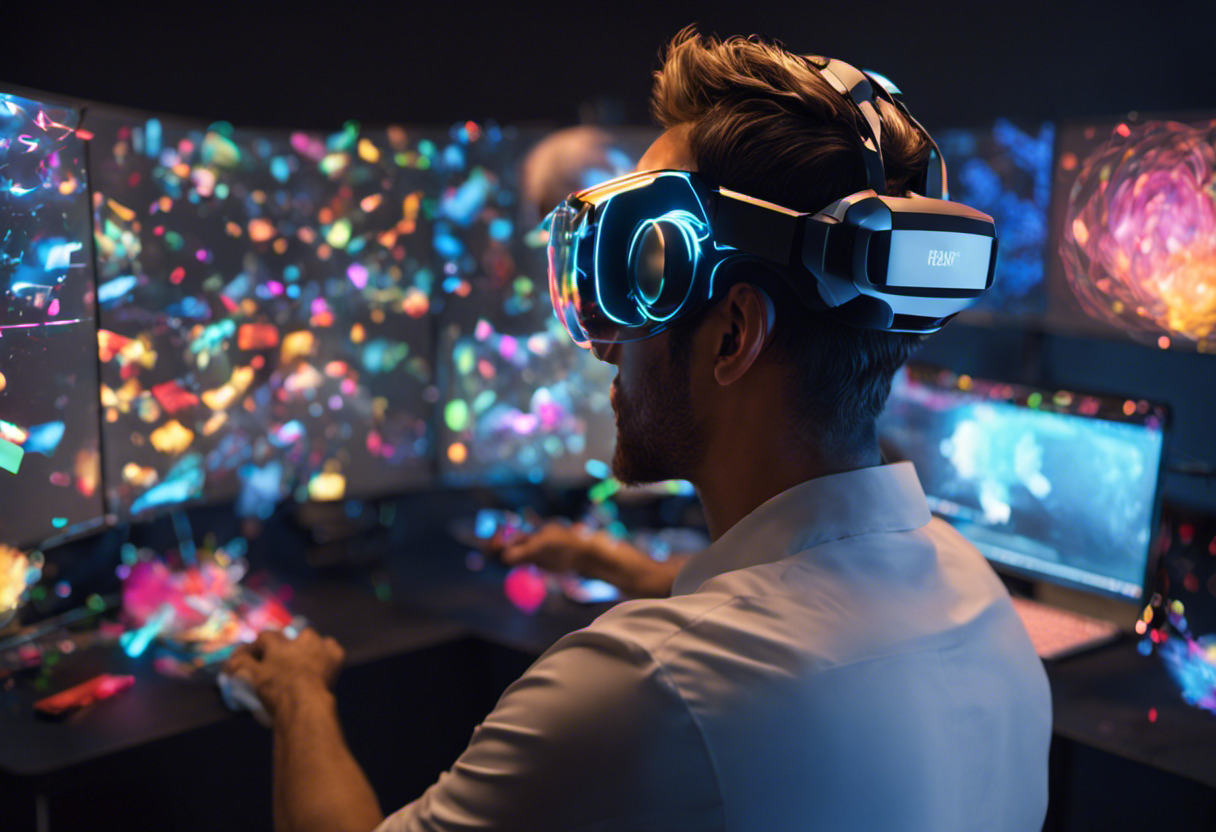
Imagine an AR application where the user elements in the web interface vary vastly in visual style. This chaos can disorient your users and affect usability.
Consider, for instance, designing a web-based AR application for a museum. A consistent design approach would involve the use of:
- Consistent styles: A blend of colors and styles in line with the museum’s branding, with smooth transitions between screens.
- Familiar typography: Fonts that depict the cultural essence of the museum, yet are undemanding for reading.
- Consistent color palettes: Colors that are uniform across all elements of the AR application, unifying the physical artifacts with their virtual counterparts.
The Role of Spatial Awareness and Depth Perception
Visual consistency cannot be termed complete without proper spatial awareness and depth perception. In AR, these aspects play an essential tool in guiding user interactions.
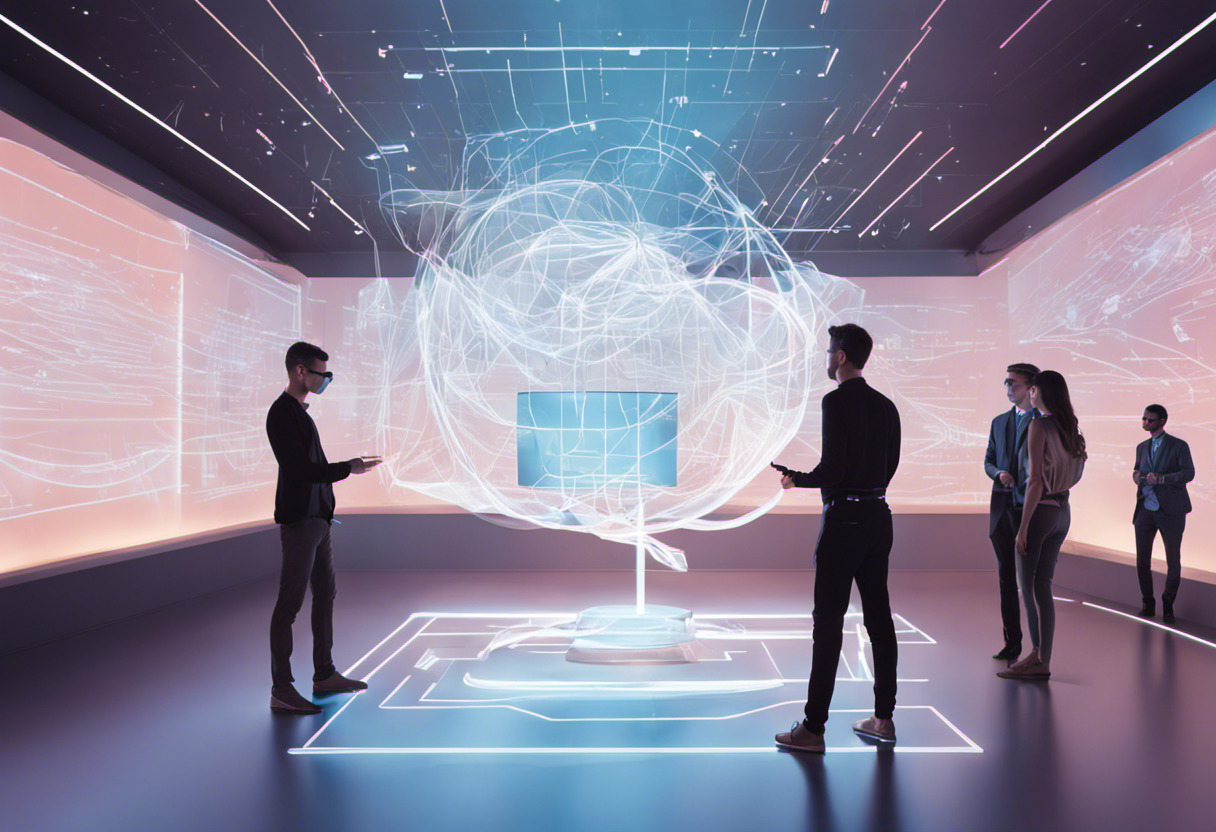
Let’s revisit the museum example. When a user points their device at an artifact, the AR element corresponding to that artifact should appear proportionally scaled and properly positioned. This is achieved by leveraging the device’s depth-sensing capabilities and providing sufficient visual cues to apprise users of spatial relationships between objects.
Visual cues are critical in assisting users navigate the AR interface. A detailed discussion on how spatial awareness and depth perception contribute to effective user interaction can be found here.
Visual Consistency: Are we doing it right?
Effective visual consistency can mean different things depending upon the context. Here are some checkpoints to ensure your AR interface hits the visual consistency nail on the head:
- Are your typography, color palettes, and visual styles consistent?
- Are your virtual objects accurately scaled and positioned in sync with their environment?
- Are your virtual elements respecting the physical rules of light and shadow?
- Is the AR interface visually harmonious with the physical environment?
| AR Interface Attribute | Checklist Question | Example |
|---|---|---|
| Typography | Does the typography embody the purpose and the theme of the AR application? | Fonts reflecting the museum’s cultural essence for museum AR. |
| Visual Styles | Are the visual styles in tandem with the style guide of the organization creating AR? | If the museum uses minimalistic design in its style guide, AR design should embody this. |
| Spatial Awareness and Depth Perception | Do your AR elements respect the spatial relationships with the material world? | When the device is pointed at a smaller artifact, the AR element corresponding to that artifact should appear smaller and vice versa. |
No matter the interface, a consistent visual strategy helps user orientation and engagement. In augmented reality, visual consistency draws the fine line between an engaging AR interface and an overwhelming one.
Immersive Augmented Reality: A Key to User Engagement
Augmented Reality (AR)- a technology that superimposes computer-generated images on a user’s view of the real world- belies the essence of creating a perfect blend of virtual and real elements. This synthesis achieves not only an engaging user interface but also ushers in an era of limitless possibilities with immersive storytelling. This principle is instrumental in enhancing both user engagement and the retention of digital experiences.
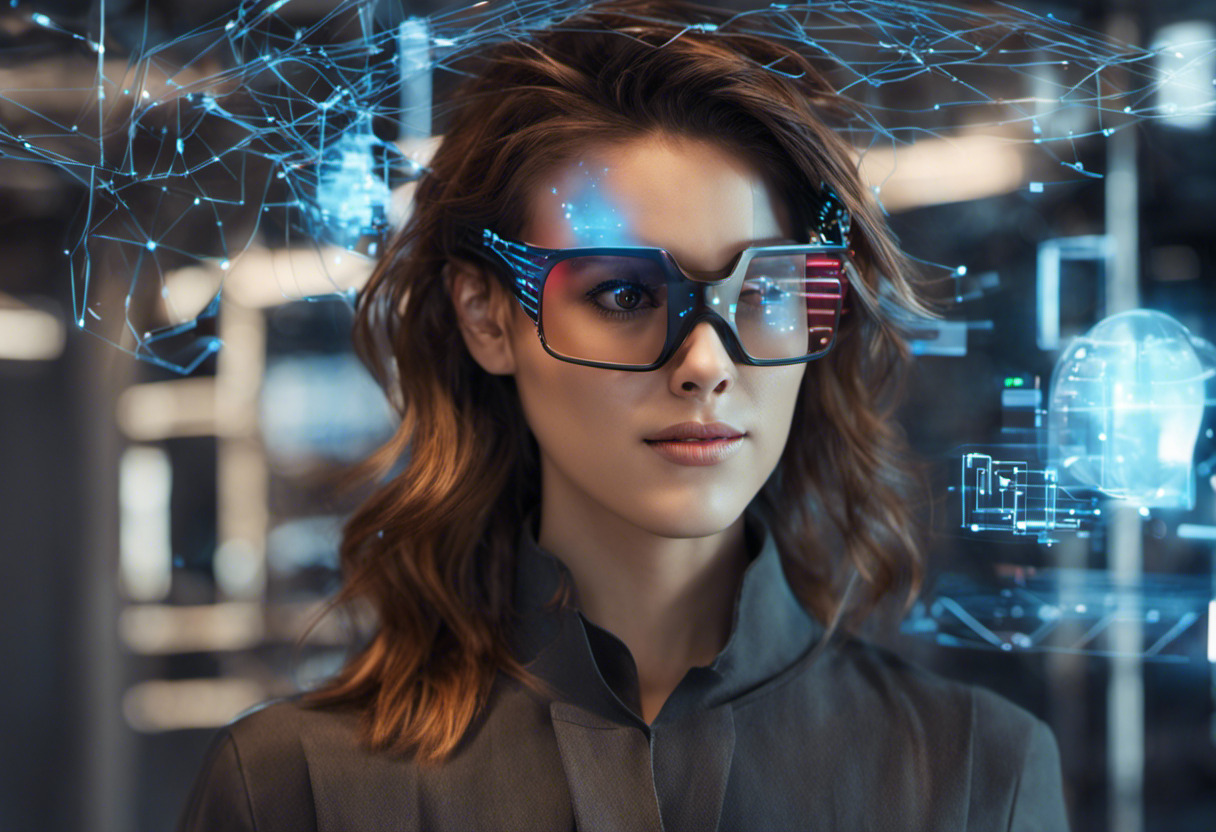
Enabling Enthralling Narrations with AR
In today’s rapidly evolving digital landscape, storytelling is acquiring a new level of interactivity, thanks to AR. The challenge, however, lies in creating narratives that unfold organically within physical surroundings, augmented by clear wayfinding elements and navigation schemes. The paradigm ‘show, don’t tell’ gains significant weight in AR, where the narrative unfolds spatially.
Let’s consider an example of a recent wildlife documentary which utilized AR to take viewers on an immersive safari experience. As users navigated their real-world surroundings, they encountered life-size virtual wildlife, shifting the gears of storytelling completely. It was a unique combination of traditional storytelling and novel space-oriented narration. Comprehensive details on similar techniques can be found in this article on effective techniques for weaving AR in web-based narratives.
Components of Augmented Reality Storytelling
Creating an engaging AR narrative primarily demands:
- Fused reality: Crafting a seamless blend of the physical and digital world.
- Interactive elements: immersion becomes vital in arousing user interest and retaining it.
- Wayfinding: Guiding users through the digital journey with clear and intuitive navigation elements.
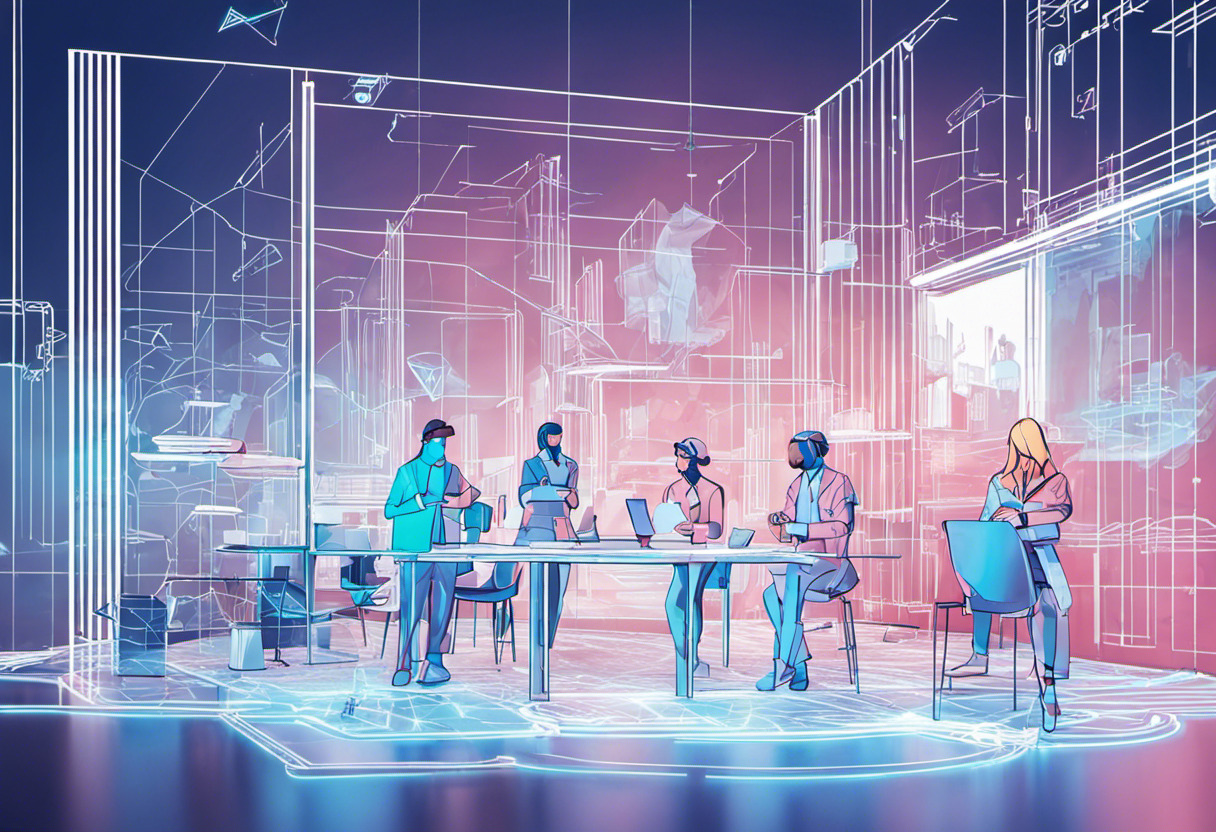
Endowing Life to Virtual Elements
Adding a layer of realism to the virtual elements in your AR experiences can significantly enhance immersion. Imagine reaching out to a virtual object and it responds to your touch and movement instantaneously, just like any real object would do. Achieving such realism in your AR experiences requires an in-depth understanding of physics and animations.
A gaming app called ‘CATCHY’ stands as a formidable testament to this principle. In this AR game, the virtual objects responded accurately to the user’s actions in real-world surroundings, defying gravity, bouncing off surfaces, and abiding by the principles of light and shadow. They felt so tangible and interactive that they captured the players’ imagination and augmented an engaging gaming experience.
Essentials for Making Virtual Elements Life-like
Instilling realism into the virtual components involves:
- Garnering a basic understanding of Physics: This enables virtual objects to respond in real-time, preserving the laws of nature as much as possible.
- Use of realistic animations: This enhances the visual appeal and adds a sense of realism.
- High-quality graphics: Detailed textures and accurate shading can make a pronounced difference in the perceived realism.
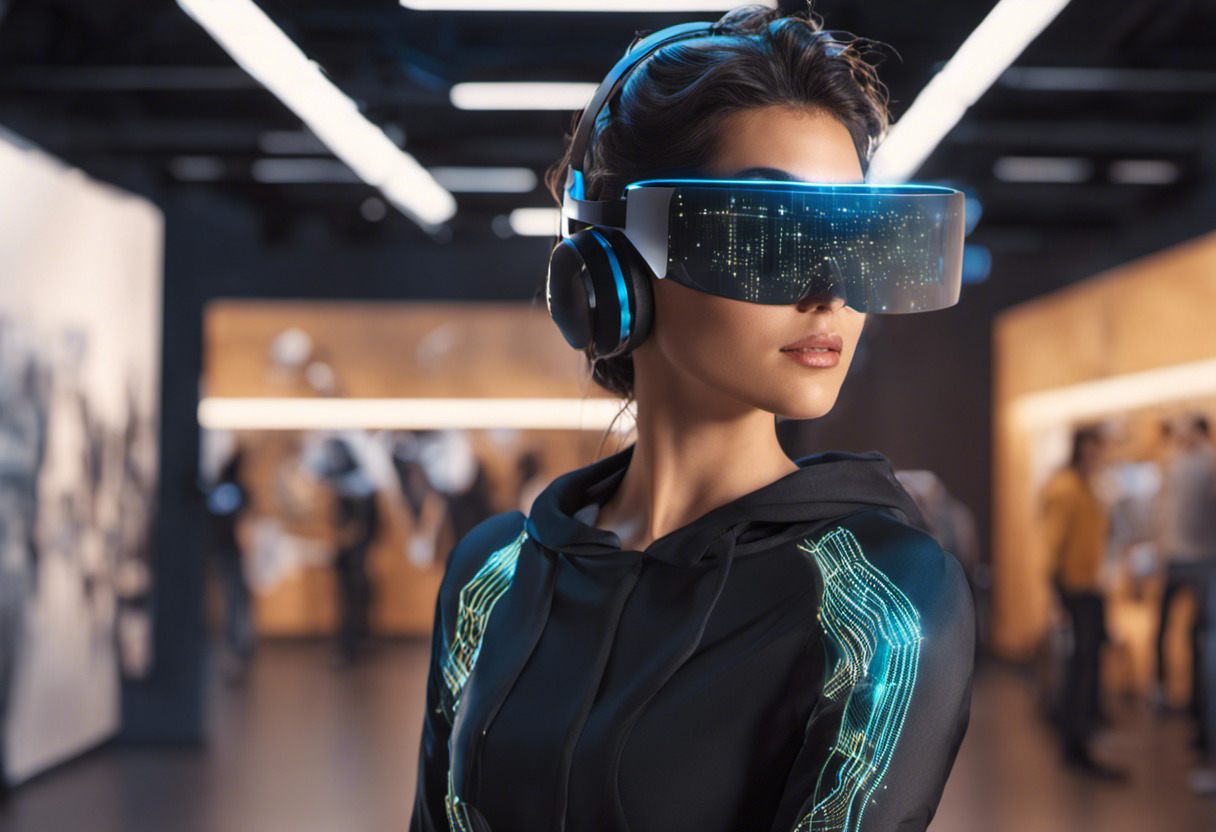
There’s no denying that design decisions must be backed by clear understanding and research in user behaviour. Creating immersive AR experiences, therefore, requires intricate planning and strategic approach, while ensuring they remain intriguing and convincing to the users.
Optimizing Web AR Experiences for Performance
In the complex world of augmented reality (AR) manifested onto web platforms, optimization is paramount. It entails meticulous focus on device capabilities, implementation of robust tracking systems, and rigorous testing strategies to ensure the delivery of a seamless and engaging AR experience. This optimization process connects closely with our pursuit of improved performance and streamlined rendering in web AR.
The Need for Low Latency and High Performance
Consider a hiker navigating treacherous terrain using an AR-enabled application: the lag between real-world motion and screen depiction could mean the difference between safe steps and dangerous slips. Similar stakes may not be present for every app, yet high latency periods can irk users, possibly leading to disengagement.
Low latency and high-performance engines are hence vital. These engines should process and relay real-world inputs rapidly, consistently merging physical and digital worlds. It is noteworthy to mention the application of Google’s ARCore or Apple’s ARKit in this context, known for their high-performing capabilities.
Robust Tracking
AR that fails to track the surrounding environment precisely can shatter the illusion of seamless integration between digital and physical spaces. Robust tracking systems form the core of AR experiences, maintaining the constancy between virtual overlays and their correlated real-world assets. As an example, Instagram’s AR filters maintain their alignment on users’ faces, even with head movements.

Streamlining Rendering and Decreasing Computations
Optimizing computing processes is key to sustain a responsive AR environment. Simplifying computations and streamlining rendering can mitigate the load on device capabilities, improving overall performance.
- Render Optimization: A technique widely adopted in 3D games, Level-of-Detail (LoD), can be a potent tool for rendering optimization. This approach involves displaying different versions of the same model based on its proximity to the user, effectively reducing the number of polygons being rendered at any given time.
- Decrease Computations: By using occlusion culling (objects hidden behind other objects are not rendered), unnecessary computations can be minimized, resulting in smoother AR experiences.
Compressing Textures and Lowering Polygon Counts
High-resolution textures and intricate 3D models can demand excessive device resources, compromising performance. It is essential to maintain a balance between AR experience quality and the consequent demand on device computation power.
- Texture Compression: Compressing textures can reduce memory usage without drastically compromising image quality. Tools like Crunch and Basis offer fine control over compression ratios.
- Lowering Polygon Count: Simplifying 3D models by reducing polygon counts can significantly lighten the computing load. Careful reassessment of a model’s complexity is needed to ensure that reductions do not affect the AR’s immersive feel.
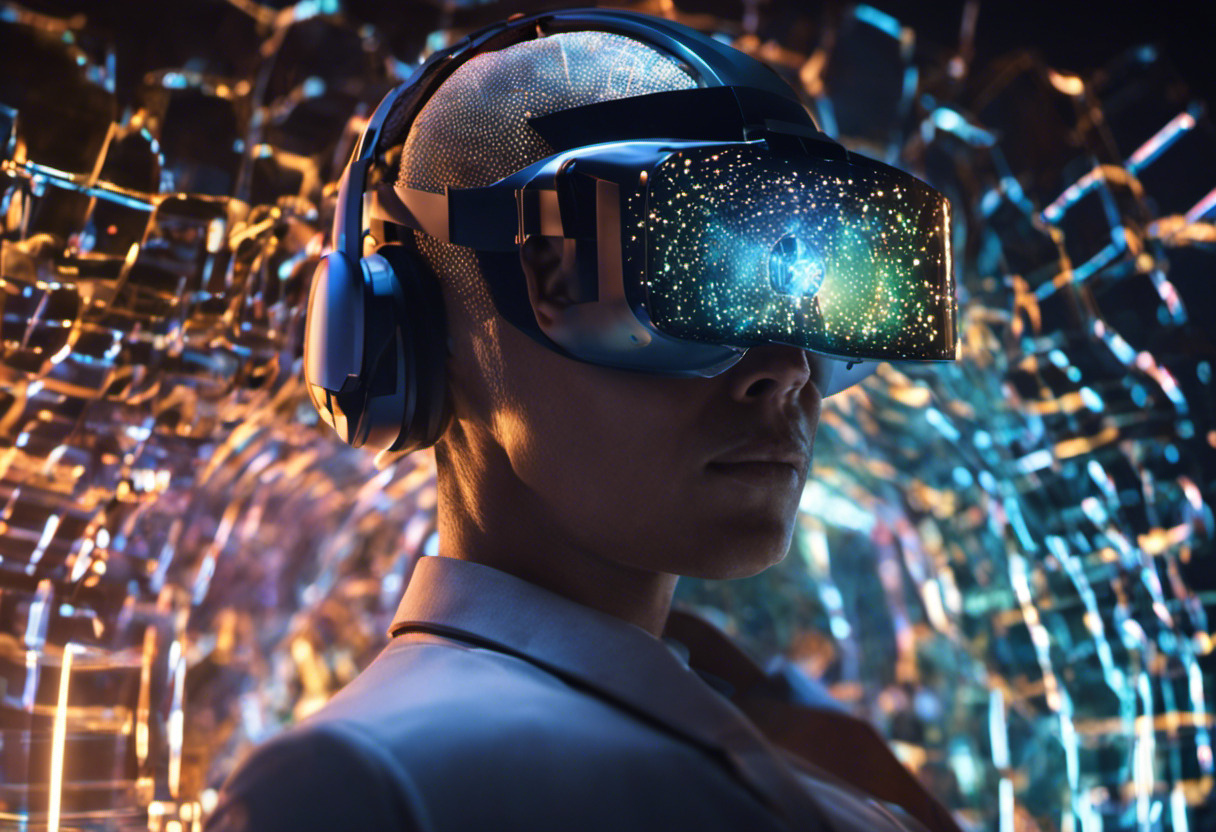
Optimization and Testing: Two Sides of the Same Coin
Optimization efforts necessitate the subsequent process of rigorous testing. Various device-specific parameters like CPU usage, battery drain, and memory consumption need to be evaluated. Tools like Unity Profiler, used for real-time tracking of various performance metrics, can be an invaluable asset for AR developers.
The advent of AR has indeed broadened the horizons of UI/UX design. As we step into this immersive future, AR optimization stands as an exciting challenge and an opportunity for web developers, designers, and AR enthusiasts alike.
Understanding the Importance of Intuitive Interactions and Feedback in AR
One of the critical aspects that define a user’s experience while navigating through augmented reality (AR) interfaces is the manner in which it responds to interactions. Further emphasizing the role of instinctive actions and responses in the web AR framework can lead to a significant enhancement in user experience and user confidence.
Integrating Common Gestures into Interaction Techniques
Many AR applications today leverage physical movements that are intuitive to the user for interactions. This is often done by
incorporating common hand gestures, familiar to users from their interaction with their smartphones and other devices.
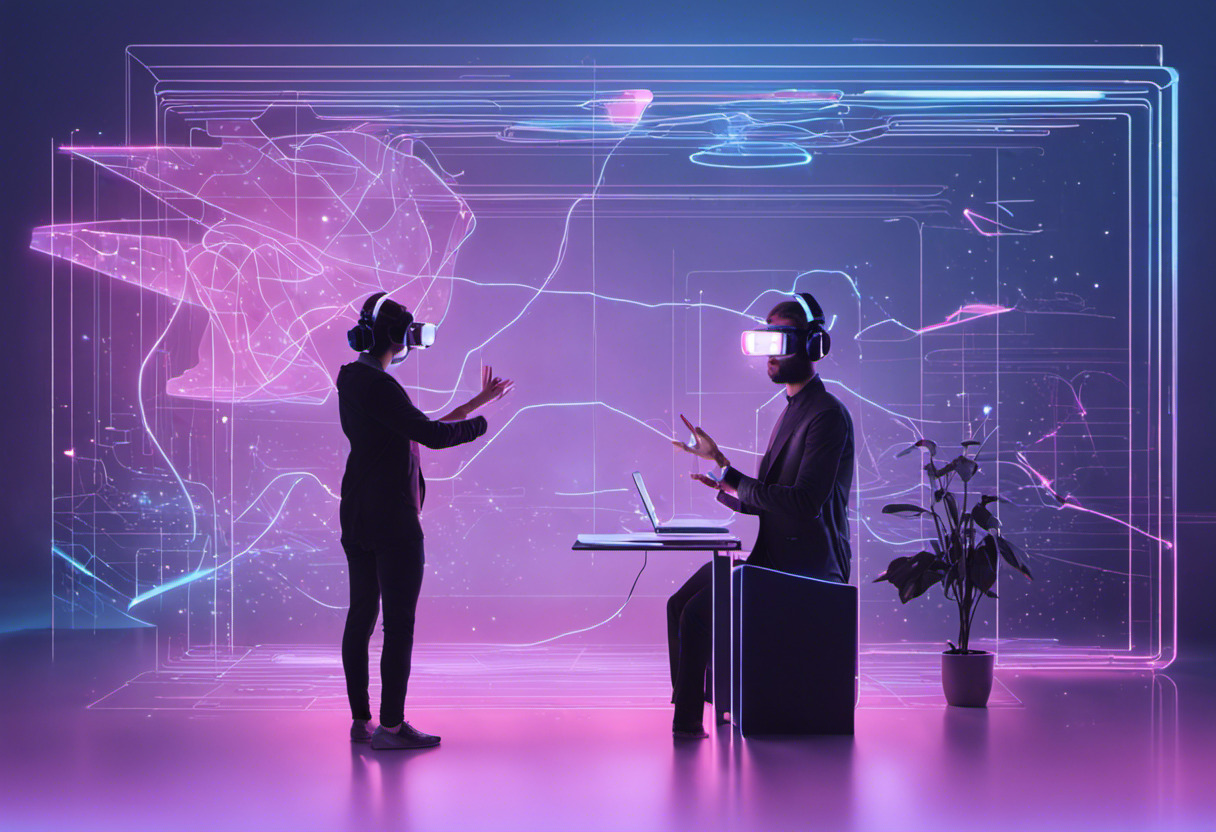
- Pinching: This gesture, generally used to zoom in or out on touch devices, can be implemented in AR to manifest similar functions.
- Swiping: Swiping can be used to scroll or navigate through different spaces or objects within the AR environment.
- Tapping: Taps can be directly correlated with pointing or selection actions in the AR space.
Check out these tutorials on how different web AR experiments use these interactions.
Even simple actions can evoke powerful responses
In the real world, natural actions like twisting a doorknob lead to expected outcomes such as a door opening. Similarly, in AR, designing for gestures that mimic real-world actions can result in the creation of more intuitive user interfaces.
Role of Responsive Feedback in AR
Another equally significant aspect in AR interfaces is feedback – letting users know the impact of their actions gives them confidence in their interactions, encouraging exploration.
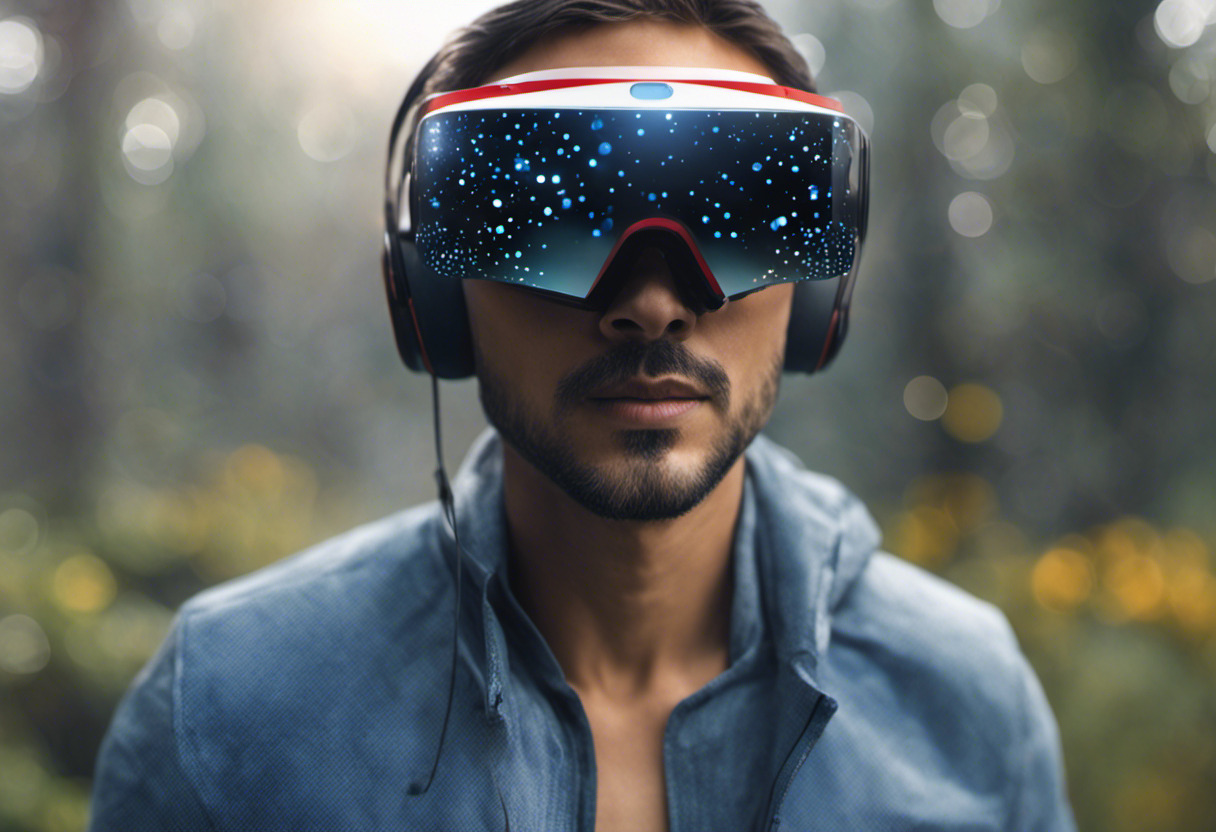
- Visual Affordances: These are visual cues that indicate which elements are interactive, giving a clear direction to users on what to do next. Icons, buttons, and sliders are common examples of visual affordances used in AR.
- Audio Responses: Sounds can also be a compelling method to confirm users’ actions.
By effectively combining intuitive interactions with responsive feedback, AR experiences can be made more engaging while keeping the interface simple and natural for the user.
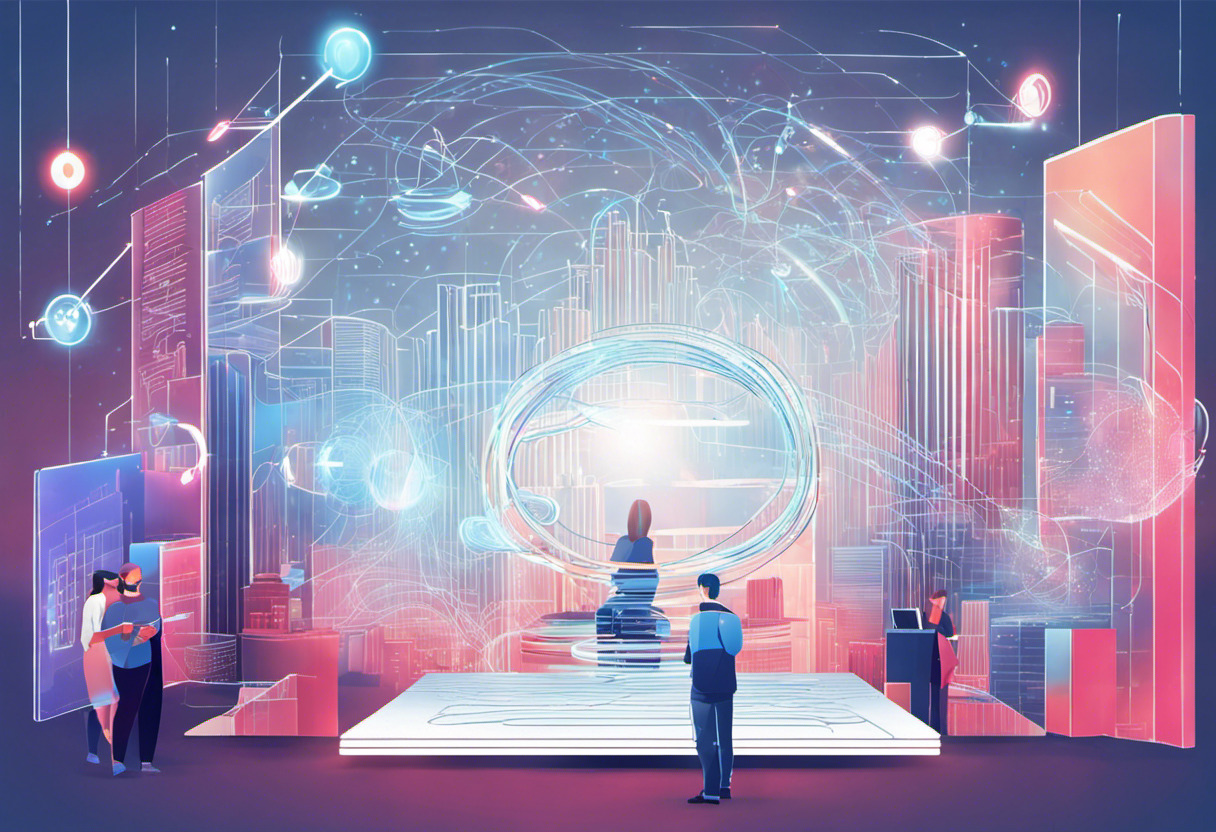
Real-life Examples Illustrating the Importance of Intuitive Interactions and Feedback
| Company | Gestures Implemented | Type of Feedback |
| Swipe, Tap | Audio, Visual Affordances | |
| Apple’s ARKit | Swipe, Pinch, Tap | Visual Affordances |
| Microsoft’s HoloLens | Hand Tracking (grab, pinch) | Hand occlusion, Visual Affordances |
In conclusion, the enhancement of user interaction and feedback in AR is an important step towards more natural and user friendly AR experiences. By mimicking physical-world gestures and incorporating meaningful feedback, users are deeply engaged and encouraged to explore the virtual world.
Hannah Stewart
Content writer @ Aircada, tech enthusiast, metaverse explorer, and coffee addict. Weaving stories in digital realms.




